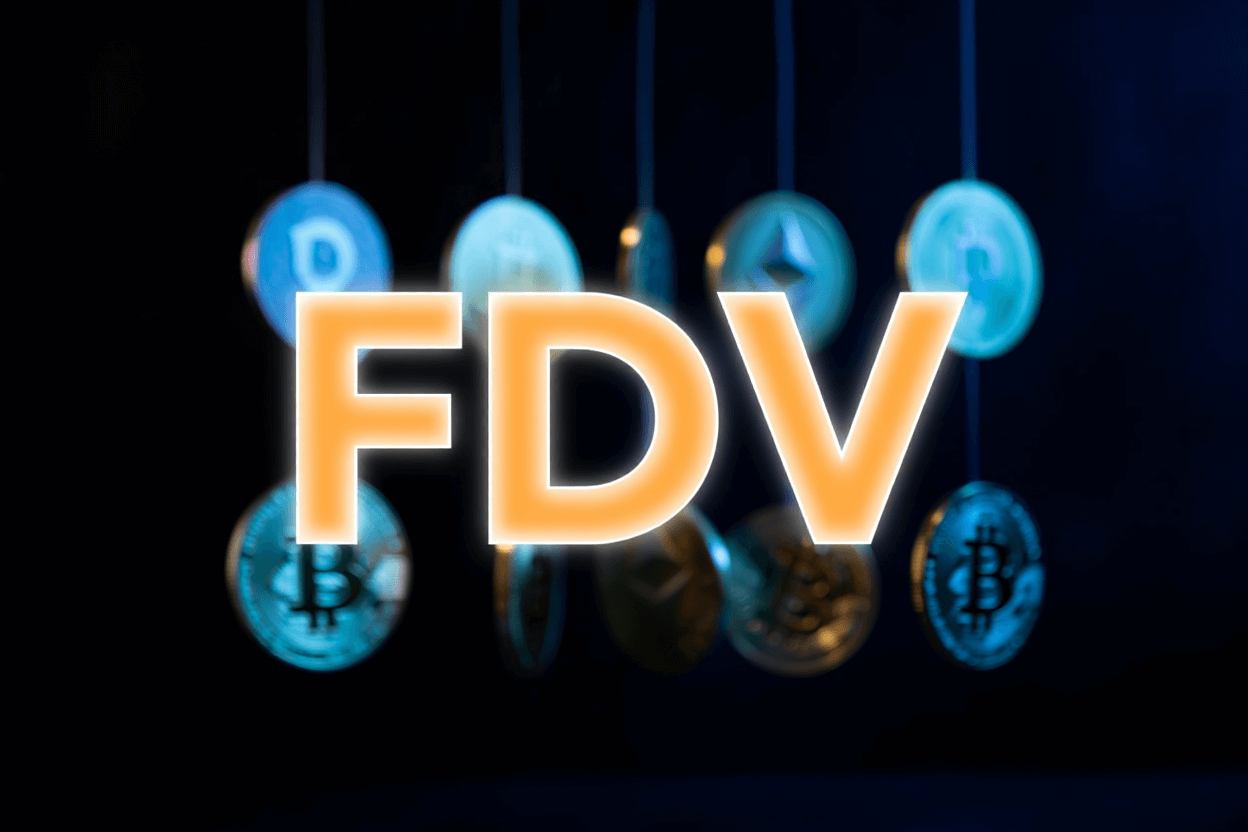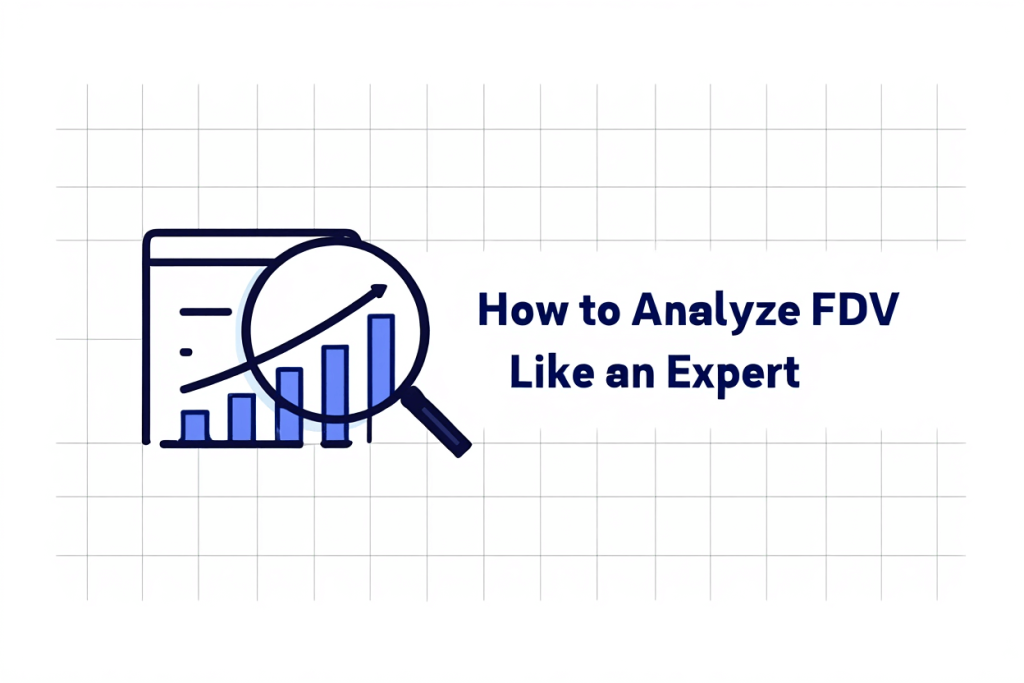Physical Address
304 North Cardinal St.
Dorchester Center, MA 02124
Physical Address
304 North Cardinal St.
Dorchester Center, MA 02124

What Does FDV Mean in Crypto? Fully Diluted Valuation, or FDV, has rapidly become one of the most talked-about metrics in crypto investing and tokenomics discussions. With new tokens launching weekly and many projects using complex unlocking and vesting schedules, understanding FDV is now essential for both newcomers and seasoned investors.
Not only is FDV frequently mentioned in the latest crypto news and during analysis of emerging blockchain projects, but it can also signal potential risks and opportunities you may otherwise miss. This article offers a clear, step-by-step guide to what FDV means in crypto, how it’s calculated, and why it’s crucial to use it wisely, empowering readers to navigate 2025’s crypto trends and token launches with confidence.
FDV stands for Fully Diluted Valuation, a metric that estimates the total value of a cryptocurrency if every possible token were in circulation at the current price. In essence, FDV answers the question, What would this project be worth if all tokens, both current and future, were available to buy and sell?
The term dilution comes from traditional finance, where issuing more shares can dilute (reduce) the ownership percentage of existing shareholders. Crypto projects often have tokens that aren’t immediately available, locked for teams, investors, or community incentives, so the same dilution logic applies. FDV bridges traditional finance and crypto by estimating valuation with all future potential supply considered, not just what’s currently traded.
Crypto makes FDV particularly relevant because:
For example, Bitcoin’s FDV equals its market capitalization (since nearly all Bitcoin is already in circulation, up to the hard cap of 21 million), while some new altcoins may have only 10% of their total supply circulating, making their FDV dramatically higher than their current market cap. Understanding this distinction is vital for real risk assessment.
Calculating FDV is straightforward, but nuances around supply can make a big difference. Here’s a step-by-step breakdown:
It’s critical to distinguish Max Supply (ultimate total per smart contract) from Circulating Supply (tokens currently traded or used).
| Example | Token Price | Circulating Supply | Max Supply | Market Cap | FDV |
|---|---|---|---|---|---|
| Project A (new altcoin) | $1.00 | 10M | 100M | $10M | $100M |
| Bitcoin | $60,000 | 19.6M | 21M | $1.176T | $1.26T |
As the table shows, FDV offers a full picture valuation, while market cap only considers the tokens actually in play. This difference becomes especially significant in projects with lengthy token release schedules.
Market Cap and FDV are related but tell different stories:
| Metric | Formula | What It Shows |
|---|---|---|
| Market Cap | Current Token Price × Circulating Supply | Current market value (real tradable tokens) |
| FDV | Current Token Price × Max Token Supply | Potential total valuation (if all tokens released) |
Why does this matter? Early-stage projects often launch with a small portion of their supply circulating, keeping the market cap low but potentially displaying a sky-high FDV. If locked tokens unlock quickly, prices may drop as supply increases. Examples: Layer 2 Ethereum projects like Arbitrum (ARB) and Aptos (APT) in 2023-2024 showed a market cap one-fourth or less than FDV due to vesting schedules.

Investors should always know both numbers to properly gauge valuation and dilution potential.
Case in point: Take the infamous 2021 example of Internet Computer (ICP). The token’s market cap at launch seemed moderate, but huge unlocks occurred weekly, severely crashing the price as supply flooded exchanges. Investors who only looked at market cap missed the red flags revealed by FDV analysis and vesting timelines.
In summary, while FDV can look like just a number, it is a critical risk metric, especially for those tracking crypto market trends or considering early-stage altcoins in 2025.
See more related articles:
To truly grasp how FDV shapes crypto investing, let’s examine a few real-world scenarios from recent years:
FDV is a critical data point for:
In 2024, nearly every dashboard now features FDV charts beside market cap, reflecting its importance in risk analysis, especially during hot crypto trends and token launches.
In short: Relying solely on FDV, without considering liquidity (TVL), developer activity, protocol adoption, and supply schedule specifics, can give a false sense of future token economics. Always combine FDV with a holistic set of crypto metrics for accurate investment decisions.
Expert investors don’t just read FDV, they know how to interpret and cross-verify it. Here’s a practical, professional checklist for crypto market analysis in 2025 and beyond:

| FDV Red Flags | FDV Positive Indicators |
|---|---|
| High FDV, low circulating supply Major unlocks approaching No clear burn or reduction plan Lack of supply transparency |
FDV close to market cap Most supply already liquid Transparent emission, vesting, or burn policy Strong network activity supports valuation |
Use these insights across CoinGecko, CoinMarketCap, Token Terminal, and project dashboards for a full-spectrum FDV analysis before investing.
| Term | Definition |
|---|---|
| FDV | Fully Diluted Valuation, the theoretical highest value of a token project if all possible tokens are issued. |
| Market Cap | Current token price × circulating supply. Represents present-day valuation. |
| Vesting | The scheduled release of locked tokens to certain holders over time. |
| Unlock | Event that makes previously locked tokens available for trading or use. |
| Circulating Supply | Number of tokens currently available on the open market. |
| Max Supply | Hard cap on the total number of tokens that can ever exist. |
| TVL | Total Value Locked in a protocol, often used in DeFi to gauge platform activity. |
| Tokenomics | Study of a token’s supply, distribution, utility, and incentive structure. |
| Dilution | Reduction in ownership/share value due to increase in supply. |
| Inflation | Ongoing creation of new tokens, raising total supply over time. |
Understanding FDV is crucial for anyone navigating the fast-moving world of crypto, from dissecting the next token launch to weighing risks in trending DeFi or blockchain projects. By knowing what FDV is, how it’s calculated, and how it differs from market cap, you can spot dilution risks, avoid project hype, and make informed choices. Use the expert checklists, FAQs, and practical analytics tips above to confidently research new opportunities on leading platforms throughout 2025 and beyond.
Remember, while FDV is a foundational metric, it gains real value when analyzed alongside tokenomics, liquidity, adoption, and transparent project updates, a holistic approach is always best for smart, balanced crypto investing.
Web Tai Chinh is a portal that updates news and information related to finance quickly and accurately, helping users have an overview before investing, clearly understanding concepts and terms related to Finance.
Explore more in our Cryptocurrency category
Return to this guide on What Does FDV Mean in Crypto? A Comprehensive Guide to Fully Diluted Valuation
📞 Contact: 055 937 9204
✉️ Email: webtaichinh@gmail.com
📍 Address: 13 Ho Tung Mau, An Binh, Di An, Binh Duong